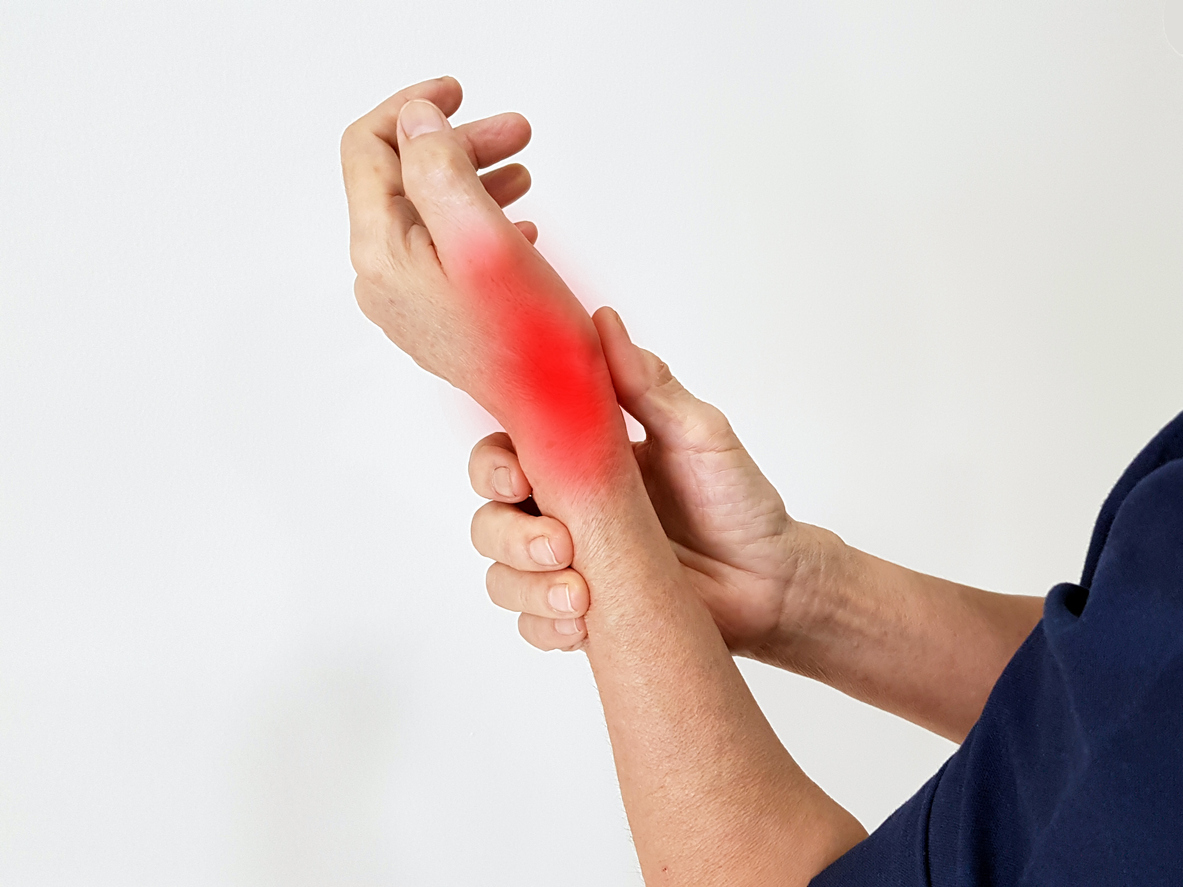

Common Causes of Wrist, Hand, and Finger Pain
- Carpal Tunnel Syndrome: Carpal tunnel syndrome occurs when the median nerve is compressed as it travels through the carpal tunnel in the wrist. This can cause pain, numbness, tingling, and weakness in the hand and fingers.
- Arthritis: Arthritis in the wrist, hand, or fingers is characterized by inflammation of the joints, leading to pain, stiffness, swelling, and reduced range of motion. Common types include osteoarthritis and rheumatoid arthritis.
- Tendonitis: Tendonitis involves inflammation of the tendons in the wrist, hand, or fingers, often due to repetitive strain or sudden injury. It can cause pain, tenderness, and difficulty moving the affected area.
- OTrigger Finger: Trigger finger occurs when a finger gets stuck in a bent position and then snaps straight. It is caused by inflammation and narrowing of the sheath around the tendon in the affected finger.
- De Quervain's Tenosynovitis: De Quervain's tenosynovitis is a painful condition affecting the tendons on the thumb side of the wrist. It is often caused by repetitive hand or wrist movements.
- Ganglion Cysts: Ganglion cysts are noncancerous lumps that develop along the tendons or joints of the wrists or hands. They can cause pain, especially if they press on a nerve.
- Fractures and Dislocations: Fractures and dislocations of the wrist, hand, or fingers can cause severe pain, swelling, and inability to move the affected area. These injuries usually result from trauma or impact.
- Nerve Entrapment: Nerve entrapment occurs when nerves in the wrist, hand, or fingers are compressed or pinched, leading to pain, numbness, and weakness. Common sites include the ulnar nerve and radial nerve.
- Sprains and Strains: Sprains involve stretching or tearing of ligaments, while strains involve stretching or tearing of muscles or tendons. Both can cause pain, swelling, and limited movement in the wrist, hand, or fingers.
- Dupuytren's Contracture: Dupuytren's contracture is a condition where the tissue under the skin of the palm thickens and tightens, causing the fingers to curl inward. This can lead to pain and difficulty using the hand.
Diagnosing Wrist, Hand, and Finger Pain
Diagnosis of wrist, hand, and finger pain involves a thorough medical history and physical examination. Imaging tests such as X-rays, MRI, or ultrasound may be used to identify the underlying cause. Nerve conduction studies or electromyography (EMG) may be performed to evaluate nerve function.

Treatment Options for Wrist, Hand, and Finger Pain
- Corticosteroid Injections: Corticosteroid injections deliver anti-inflammatory medication directly into the affected area, reducing inflammation and pain associated with conditions like tendonitis and arthritis.
- Platelet-Rich Plasma (PRP) Injection: PRP therapy involves injecting a concentration of the patient's own platelets to promote healing and reduce pain in injured or inflamed wrist, hand, and finger tissues.
- Amniotic Injections: Amniotic injections use amniotic fluid or tissue to promote healing and reduce inflammation, providing relief for wrist, hand, and finger injuries and degenerative conditions.
- Exosome Injections: Exosome injections deliver regenerative particles that can aid in the healing of damaged wrist, hand, and finger tissues, reducing pain and improving function.
- Over-the-Counter Pain Relievers: Ibuprofen, acetaminophen, and naproxen can help reduce pain and inflammation associated with wrist, hand, and finger conditions.
- Prescription Medications: Anti-inflammatory drugs, muscle relaxants, and pain relievers may be prescribed for severe pain and inflammation in the wrist, hand, and fingers.
- Anti-Inflammatory Creams: Topical creams containing anti-inflammatory agents can be applied to the wrist, hand, and fingers to reduce pain and swelling.
- Exercise Programs: Tailored exercises to strengthen the muscles around the wrist, hand, and fingers, improve flexibility, and restore range of motion.
- Manual Therapy: Techniques such as massage, mobilization, and stretching to relieve muscle tension, improve mobility, and reduce pain in the wrist, hand, and fingers.
- Acupuncture: Insertion of fine needles into specific points on the body to relieve pain and promote healing, which can be effective for preventing and treating various types of wrist, hand, and finger pain.
- Chiropractic Care: Joint adjustments and manipulations to improve alignment and reduce pain in the wrist, hand, and fingers, particularly for conditions related to nerve entrapment.
- Massage Therapy: Techniques to reduce muscle tension, promote relaxation, and alleviate pain in the wrist, hand, and fingers.
- Transcutaneous Electrical Nerve Stimulation (TENs) Unit: A device that uses electrical currents to stimulate nerves and reduce pain, which can be helpful for managing chronic wrist, hand, and finger pain.
- Braces and Splints: Supportive braces and splints can help stabilize the wrist, hand, and fingers, reducing pain and preventing further injury.
- Ultrasound Therapy: Use of sound waves to promote tissue healing and reduce inflammation, which can help alleviate pain in the wrist, hand, and fingers.
- Shockwave Therapy: A non-invasive treatment that uses shockwaves to stimulate healing and reduce pain, which can be beneficial for certain types of chronic wrist, hand, and finger pain.
Interventional Therapies
Medications
Physical Therapy
Alternative Treatments
Conclusion
• Wrist, hand, and finger pain can significantly impact your daily life, but with the right approach, it can be effectively managed. Understanding the cause of your pain and working with healthcare professionals to develop a personalized treatment plan can help you find relief and improve your quality of life. If you are struggling with persistent or severe wrist, hand, and finger pain, seek medical advice to explore your options for diagnosis and treatment.
